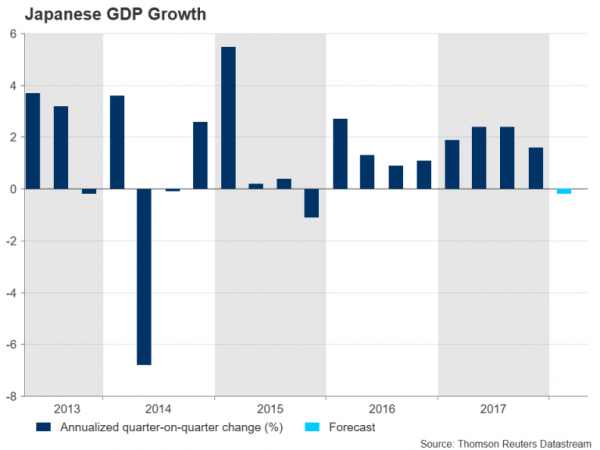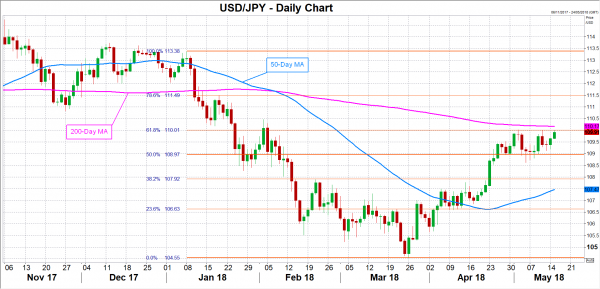GDP data out of Japan will come into focus on Wednesday (Tuesday, 23:50 GMT) as investors watch how resilient the Japanese economy was to the soft patch in global growth during the first three months of 2018. After achieving eight straight quarters of growth at the end of 2017 – the longest streak of expansion since the 1980s – the big question is whether any contraction at the start of 2018 will be a blip or a major bump in the road for policymakers.
Japan’s economy is forecast to have shrunk by 0.2% on an annualized basis in the first three months of the year. On a quarter-on-quarter basis, this translates to a mere 0.05% contraction, or 0% when rounded. Sluggish household consumption and weaker demand for exports are likely to have proved a drag on economic growth in the January-March period.
However, capital expenditure is expected to have held up reasonably well, suggesting businesses remain optimistic about the future. Core machinery orders – a key gauge for future business spending – rose robustly in both January and February, though they are forecast to drop by 3% month-on-month in March in data due on Thursday. If global demand picks up in the coming months and consumer spending also recovers, GDP growth should rebound in the current quarter.
Other economies have also suffered a slowdown in the first quarter, mainly the Eurozone and the United Kingdom. But assuming there are no unexpected headwinds such as higher US trade barriers, an oil price shock from an escalation of tensions over Iran, or a fresh political crisis in Europe, the outlook for global growth for the rest of 2018 remains upbeat and this should be positive for Japanese exporters.
A bigger concern though for the Bank of Japan, as well as the Abe government, is persistent weakness in real incomes and consequently, consumer spending. Japanese households have been struggling to raise their expenditure following the sales tax increase of 2014 as wage growth has been stagnant. This has weighed on growth and has added to the Bank of Japan’s challenges in meeting its 2% inflation target.
However, there are some signs that wage pressures are finally starting to build up. Data out last week showed wages in Japan rose by an annual rate of 2.1% in March – the fastest pace since June 2003, while real wages turned positive for the first time in four months. If the wage picture continues to improve, higher consumer spending should follow suit and growth should bounce back in the coming quarters.
A modest drop in quarterly GDP growth on Wednesday would support this view and could help the yen strengthen in forex markets. Dollar/yen could slip to around the 109 level (the 50% Fibonacci retracement of the downleg from 113.38 to 104.55) if the data comes in largely in line with estimates. A better-than-expected GDP figure could exert a bigger downwards pressure on the pair, pulling it towards the 108 level (38.2% Fibonacci). However, should the data miss expectations and the economy shrinks more than anticipated, dollar/yen could find fresh upside momentum to make a convincing break above key resistance at the 110 level (61.8% Fibonacci).














